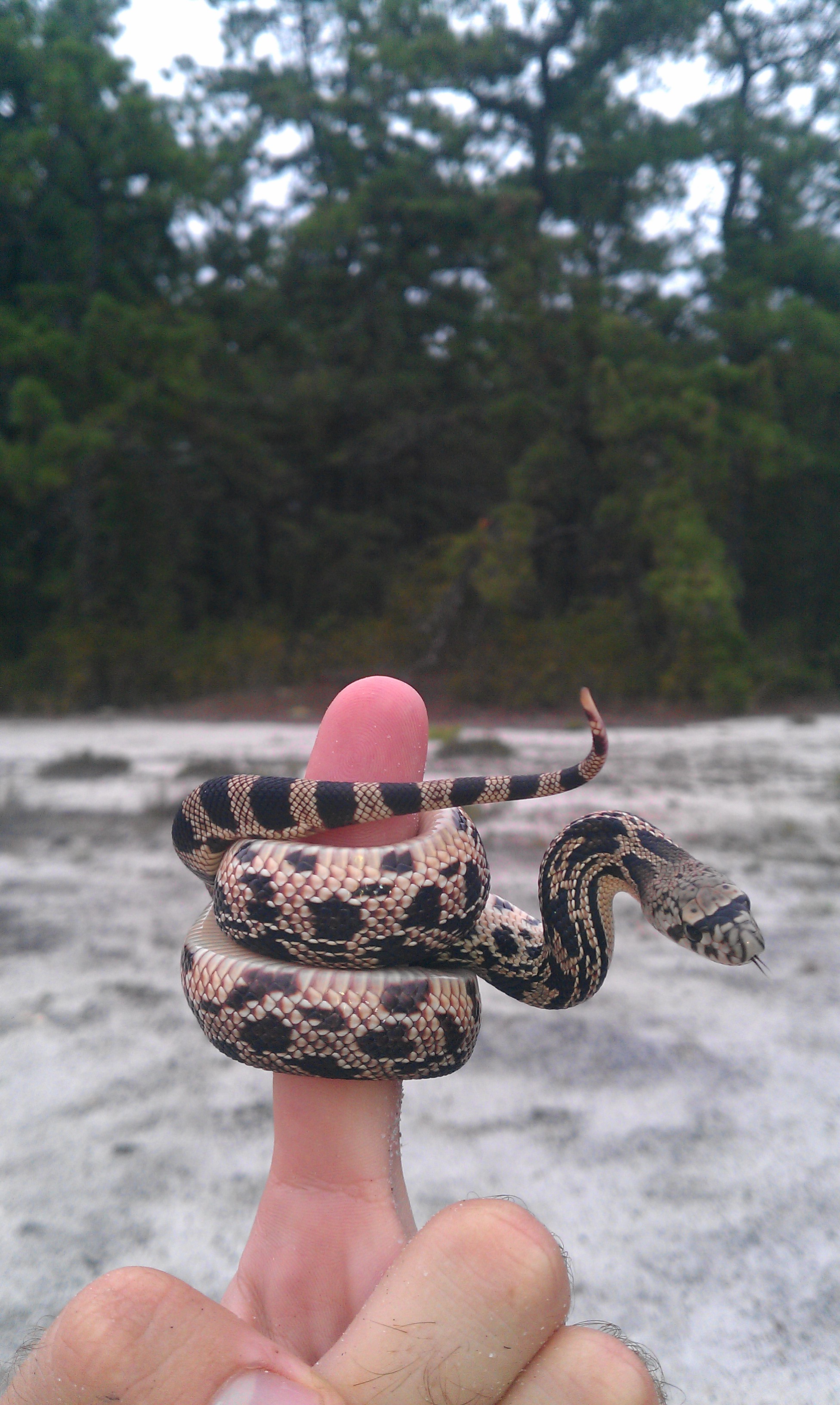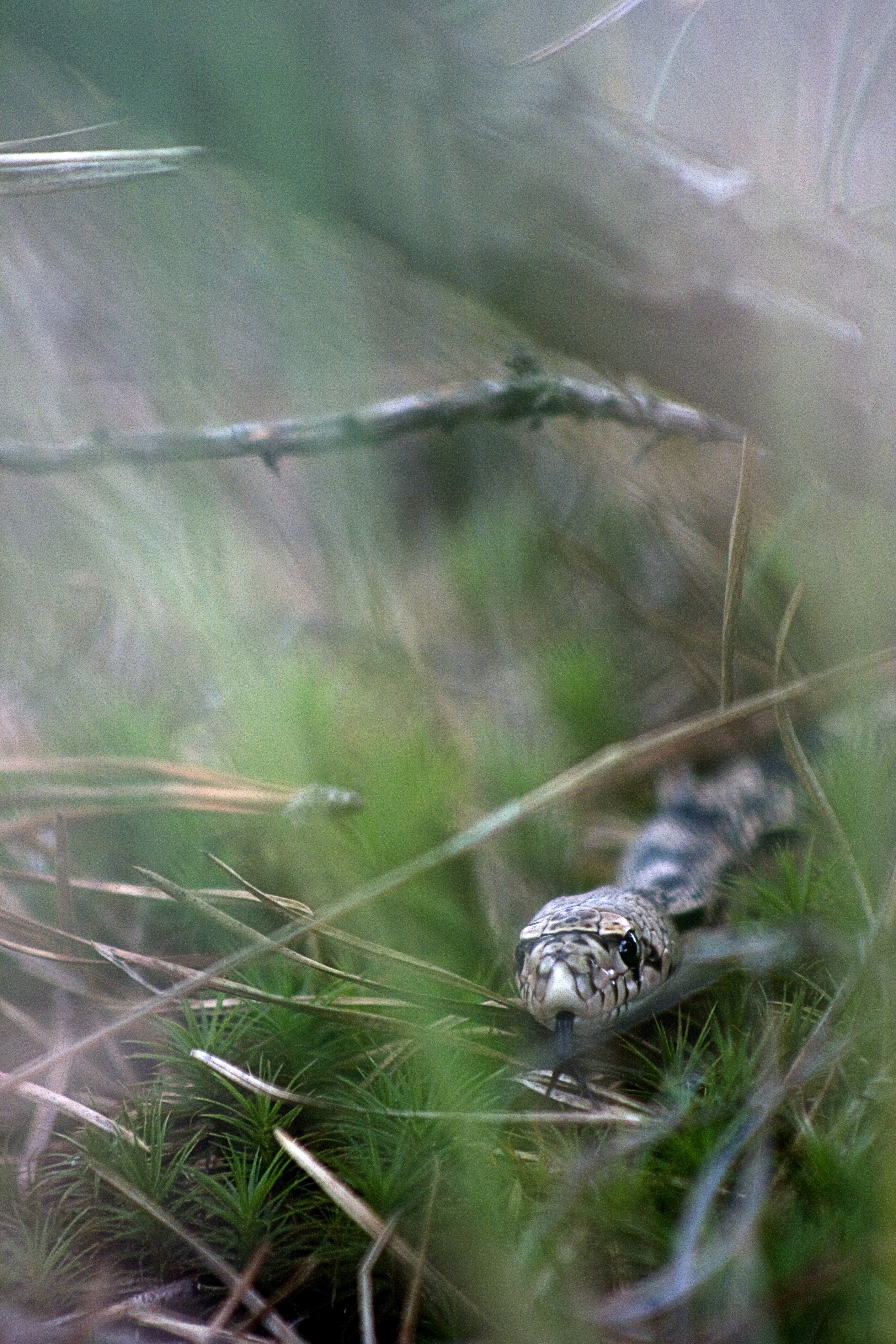We thank Kevin Smith of Drexel University for this guest post:
The Northern pine snake (Pituophis melanoleucus) is a state threatened species in the New Jersey Pine Barrens. Due to the cryptic and fossorial nature of this species, there is a lack of data on their early life behavior and dispersal. An understanding of first season life history traits from hatching to ingress is particularly difficult to monitor.
Without field observations it is difficult to elucidate key developmental processes, such as shedding rate, feeding rate, diet preference, habitat preference, dispersal patterns, and the spatial ecology after leaving the nest.
The Laboratory of Pinelands Research, under the direction of Dr. Walter F. Bien at Drexel University, has been studying the Northern pine snake for over a decade in collaboration with the NJ Department of Environmental Protection, and the New Jersey Air National Guard at Warren Grove Gunnery Range.
Dr. Ron Smith and Dane Ward have collectively implanted and radio tracked over 70 individuals, investigating their spatial ecology and distribution. Until recently, the use of implanted radio transmitters was only applicable for fully grown adults, and external transmitters are not appropriate for semi-fossorial constrictors as they interfere with normal snake behaviors and readily fall off this active species.
Last year, however, as part of Kevin PW Smith's doctoral thesis, we performed the first surgical transmitter implantation in eight P. melanoleucus neonates using six ATS model R1635 and two model A2414 transmitters.
Both models were successful in tracking pine snakes in the first stages of life. In collaboration with the New Jersey Conservation Foundation at the Franklin Parker Preserve, we monitored neonate activity daily, and recorded environmental and behavioral data. This season, an additional ten neonates will be implanted with ATS model R1635 transmitters and tracked daily.
Being able to make daily observations on a previously secretive and understudied life stage in situ has given us insight to a wide range of behaviors, including dietary patterns, shedding schedules, and micro-habitat usage.
Each day of new data has helped fill in vital gaps of the life history of this species. This research facilitates our ability to better plan, recommend, and execute more conservation strategies for this threatened species.
Photo credit: Kevin Smith

